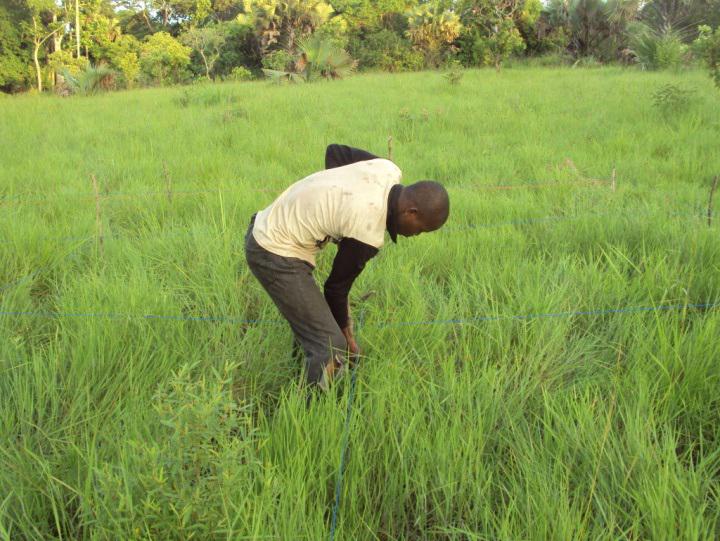Demeango Serge Zon
This project aims to assess the current status of invertebrate biodiversity of Lamto reserve focusing on Collembolan communities used as bio-indicator

The Lamto reserve is 2500 ha of forest-savannah mosaic which serves as a refuge for biodiversity in a predominantly agricultural region and home to several endangered or threatened species (monkeys and Buffalo). But this reserve is undergoing increasing anthropogenic pressure especially bush fire that threatens conservation of local biodiversity.
In this project we will compare the diversity and structure of Collembolan (springtails) community along an increasing disturbance gradient from the reserve centre considered as an intact zone to outlying areas under human influence.
Collembola are known for their great sensitivity to environmental change and they are often used as bio-indicators to monitor the state of health of terrestrial ecosystems. They play an important role in soil fertility and they are regarded as regulators of biogeochemical cycles. They also play an important role in the food web as prey for predators such as spiders and mites, phycophagous, primary and secondary decomposers and they are essential for the microorganisms dispersion.
Standard methods for collecting Collembola and investigating species richness, diversity and community structure will be used. Two zones will be defined according to the anthropogenic gradient: (1) an intact zone in the central area and (2) a zone under human influence in the peripheral area. In each zone, the three main habitat types (forest, wooded savannah and grassland) will be sampled with three replicates.
The sampling will investigate Collembola of two soil strata:
a. Collembola active on soil surface will be collected using pitfall traps made with small plastic boxes filled with one-quarter of its capacity with 60% alcohol mixed to 25% ethylene glycol. The traps will be deployed at each sampling point and collected after 48 hours. Animals collected by traps will be sorted and preserved in 95% alcohol in plastic jars.
b. Collembola of soil and litter will be collected by the Berlese dry-funnel method. Soil samples will be taken by a corer 5 cm x 5 cm x 10 cm. Litter samples will be taken using a quadrate of 20 cm x 20 cm.
The duration of the Berlese extraction will be 14 days. Animals collected will be preserved in 95% alcohol in plastic flacons. Animals will be identified under a light microscope to genus and species or morpho-species level using available keys after making microscopic slides.
This work will provide reliable scientific information on the risk of biodiversity loss due to human pressure on the Lamto reserve. This information will be used by the land manager as decision tool to convince policymakers and donors to provide more support and by NGOs to raise awareness for a better conservation of this heritage area. It will also contribute to update the knowledge of the Collembolan communities in Côte d'Ivoire and their value as biodiversity management tool.